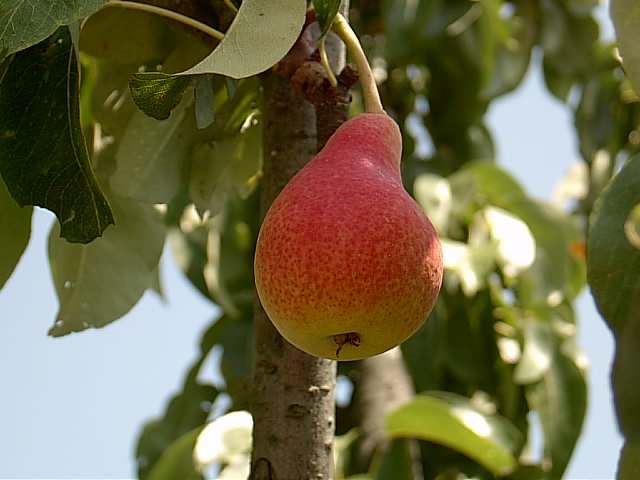︎︎︎ PERA MOSCATELLA

Le piante madri sono state trovate nel comune di Città di Castello (PG). Con diverse variazioni, questa varietà è coltivata in tutto il Centro Italia, soprattutto nelle zone di media e alta collina, e qui ancora si può trovare in grandi piante singole. L’albero è molto vigoroso, rustico e a portamento piuttosto espanso, produce in maniera costante e fiorisce precocemente. La sua fioritura è così abbondante che è adatta anche come pianta mellifera di grande pregio.
I frutti sono di piccole dimensioni, frequentemente riuniti in mazzetti, piriformi, a peduncolo lungo, senza cavità peduncolare e calicina. La buccia è gialla con sfumature rosso scuro dalla parte del sole e numerose piccole lenticelle La polpa è bianca, molto zuccherina e profumata, con sapore di moscato, con torsolo piccolo. Matura la prima decade di agosto ed è da consumo immediato.
Si trova menzionata numerose volte e da tempo immemorabile. Il suo nome viene dall’odore di moscato, ed è così dolce che viene chiamata anche Moscarella (le mosche sono attratte dal suo zucchero). Vengono anche dette ‘superbe’ (forse le stesse che citava Columella) perché pur piccole «vogliono essere le prime a comparire mature sulle tavole».
The mother plants were recovered in the Citta’ di Castello (Perugia) area. This pear is cultivated, with different variations, in all of Central Italy, especially in medium to high hills areas where it can still be found in large individual plants. The tree is very vigorous, hardy and with quite spreading habit. It crops regularly and blooms early. Its bloom is so abundant that it is also highly valuable as a honey plant. The fruits are small and frequently clustered. They have a pear-like shape. Their stem is long and their cavities are non-existent. Their skin is yellow with dark red shading in the sun and with numerous lenticels. The flesh is white, very sugary and aromatic, with Muscat flavor and small core. It matures in the first ten days in August and it is for immediate eating. It is mentioned frequently and since time immemorial. It owes its name to the Muscat for the scent it emanates. It is so sweet that it is also called moscarella (from mosca=fly,) as it appears that flies are attracted to its sugar. These apples are also called superbe (may be the same Columella describes) because though small “they are the first ones to appear ripened at our table”.